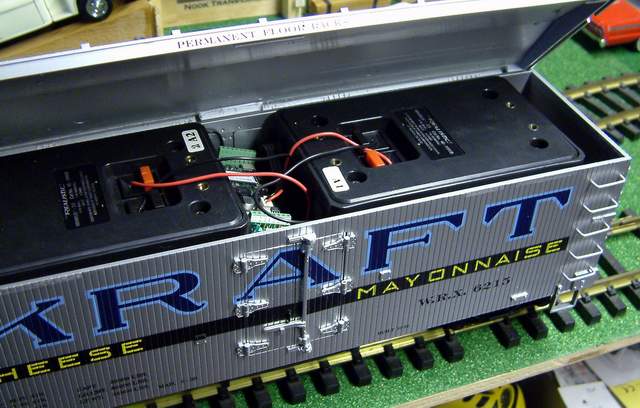Just because I need to juggle one-more project; I’ve started the conversion of my Cheesy Sound Car to include on-board battery and an ESC to become a power & sound trail-car. I will maintain the ability to use it as a track powered sound-only trail car, although it probably won’t get used that way often. I’m trying to decide if I should keep the Phoenix back-up battery connected. If I do, I realize that the on-board batteries will be charging this un-needed battery when running in battery mode. If I simply remove it, then I will loose idle sounds when on track power. Would it make sense to yank out the Phoenix battery and allow my on-board battery to be plugged in to the Phoenix back-up battery connector when running on track power? I think the Phoenix battery is 4.5V and my on board pack will be 11.1V. Is this a problem? Does the Phoenix have regulation on the battery input? If not, a 5V regulator in my connection circuit would be possible. Just for reference, all the connections on the Phoenix are easily accessible via the removable roof on the car…

One speaker is going away to make room for batteries and an ESC.
